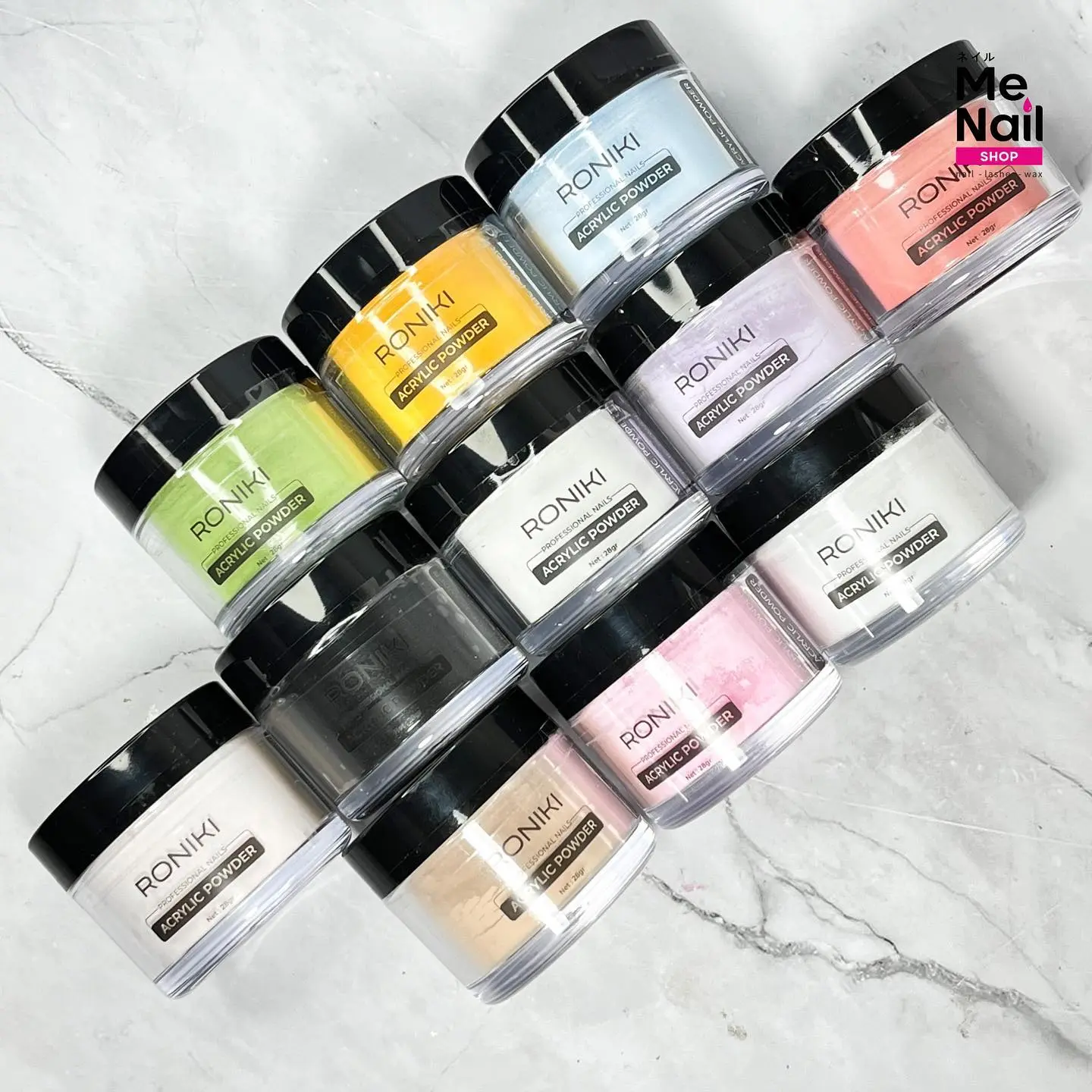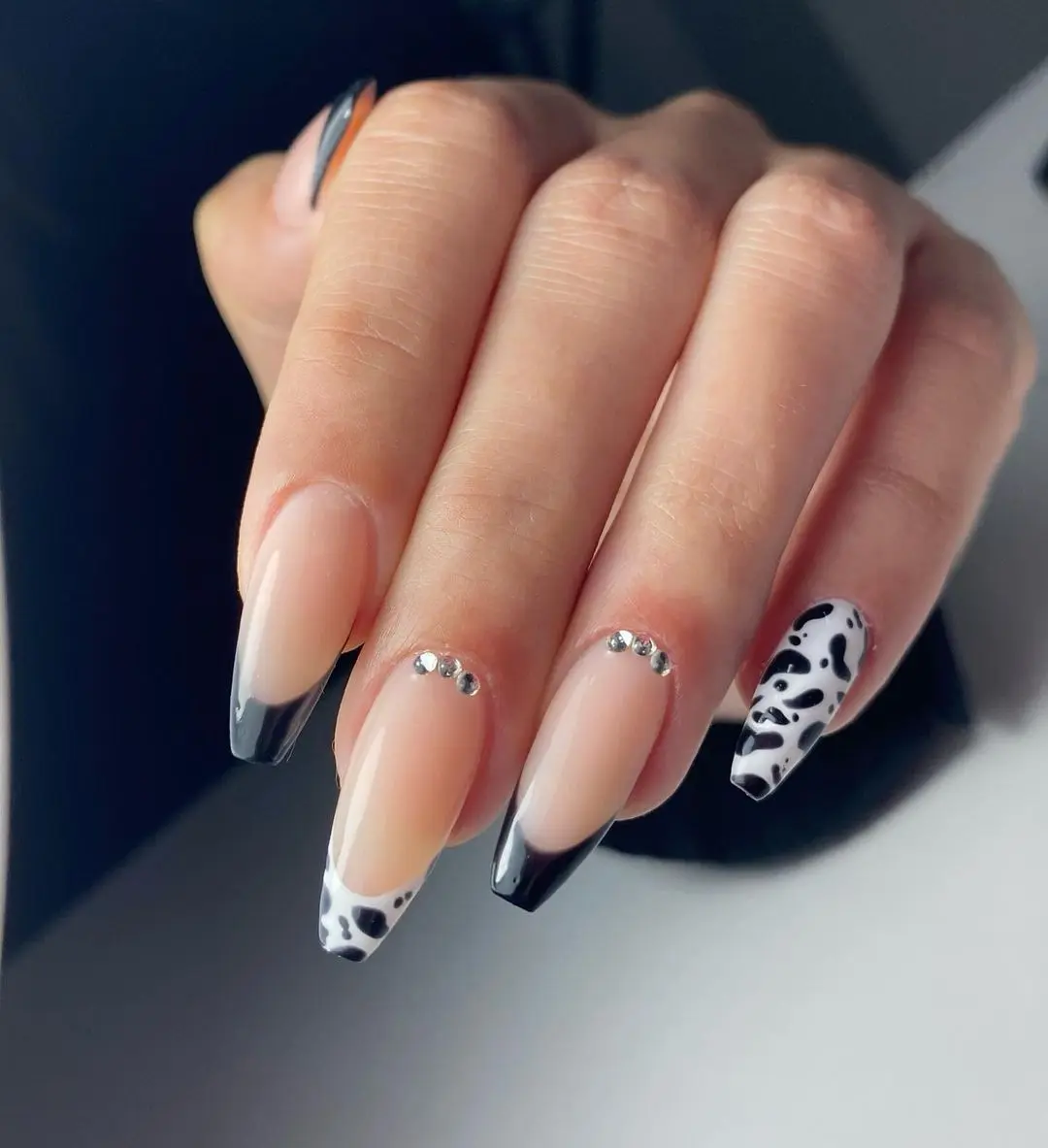Acrylic nails have become increasingly popular in recent years as a way to achieve long and glamorous nails. However, some people are concerned about acrylic nails‘ potential risks and side effects. You’re not wrong to be worried. Various studies provide evidence that the use of acrylic nails can be harmful to nail your health and can increase the risk of nail disorders, bacterial and fungal infections, and allergic reactions.
However, with proper application and practising a healthy nail care routine, you should be able to rock your acrylics without adverse effects,
In this piece, we will explore whether acrylic nails are bad for your nails and discuss ways to reduce the risks associated with their use.
Composition of Acrylic Nails
Acrylic nails are composed of a mixture of liquid and powder applied to natural nails. The liquid is usually made of ethyl methacrylate (EMA) or methyl methacrylate (MMA), while the powder is typically made of polymethyl methacrylate (PMMA). MMA is considered more toxic than EMA and has been banned in many countries for use in nail salons due to its potential health risks.
The chemicals in acrylic nails can affect the health of natural nails in several ways. Acrylic nails can dehydrate natural nails, making them more brittle and prone to breakage. The chemicals can also cause allergic reactions or skin irritation in some people.
Risks and Side Effects of Acrylic Nails
Acrylic nails can cause several potential risks and side effects, including:
Nail Damage
One of the most significant risks associated with acrylic nails is nail damage. The process of applying and removing acrylic nails can weaken the natural nails, making them thinner and more prone to breakage.
This is because applying acrylic nails involves buffing the surface of the natural nails to create a rough texture that will help the acrylic adhere better. This can damage the nail bed, making the natural nails more vulnerable to breakage.
Infection
Another potential risk associated with acrylic nails is the increased risk of infection. Acrylic nails create an environment conducive to the growth of bacteria and fungi. If the acrylic nails are not properly cleaned or maintained, bacteria and fungus can grow between the natural nails and the acrylics, leading to infection.
A study published in the National Library of Medicine investigated the link between artificial nails and bacterial and fungal infections. The study found that individuals who used artificial nails had a higher risk of developing these types of infections compared to those who did not use artificial nails.
Additionally, improper application or removal of acrylic nails can cause cuts or nicks on the skin, increasing the risk of infection.
Allergic Reactions
Allergic reactions are also potential side effects of acrylic nails. Some people may be allergic to the chemicals used in acrylic nails, such as the liquid and powder used to create the acrylic mixture. Allergic reactions can cause redness, swelling, and itching of the skin around the nails. If you experience any signs of an allergic reaction after getting acrylic nails, it is essential to seek medical attention immediately.
According to a 2017 study on the Safety and Efficacy of Nail Products, the use of nail products such as nail polish, nail polish removers, and artificial nails can have adverse effects on health. Commercial nail products have been found to contain harmful substances like toluenesulfonamide-formaldehyde resin and methacrylates, leading to allergic contact dermatitis and other problems. Ingestion of substances like acetonitrile in nail polish removers may also have toxic and caustic effects.
Skin Irritation
Skin irritation is another potential side effect of acrylic nails. The chemicals used in acrylic nails can cause skin irritation, especially if they come into contact with the skin around the nails. Symptoms of skin irritation may include redness, itching, or burning sensations. If you experience any of these symptoms, it is essential to remove the acrylic nails immediately and seek medical attention if the symptoms persist.
How to Reduce Risks When Using Acrylic Nails
To minimize the risks associated with acrylic nails, it is essential to follow these guidelines:
Choose a Reputable Salon and Technician
Choosing a reputable salon and technician is crucial when it comes to minimizing the risks associated with acrylic nails. Looking for a salon with high-quality products and a well-trained technician who can apply and remove acrylic nails safely is essential. A reputable salon will also follow proper hygiene and safety protocols, such as using sterilized tools and equipment and disposing of used materials properly.
Avoid Using MMA-based Products
It is also essential to avoid using MMA-based products. MMA is a toxic chemical banned in many countries in nail salons. MMA-based products are cheaper than EMA-based products, but they are more rigid and can cause significant damage to natural nails. Look for salons that use EMA-based products instead. EMA is a safer alternative to MMA and is more flexible, making it less likely to cause damage to natural nails.
Properly Apply and Remove Acrylic Nails
Proper application and removal of acrylic nails can also help minimize damage to natural nails. It is essential to file the nails gently, not to pry or force off the acrylics, and to avoid picking or biting the nails. When removing acrylic nails, it is crucial to use the proper tools and techniques to prevent damage to the natural nails. It is also important to avoid removing acrylic nails at home and to seek professional help instead.
Take Breaks Between Applications
Taking breaks between applications is also crucial for maintaining healthy nails. Give your natural nails time to breathe and recover by taking breaks between acrylic nail applications. This can help prevent damage to the natural nails and minimize the risk of infection.
Myths about Acrylic Nail Safety
Many myths surrounding acrylic nails and their safety can lead to confusion and misinformation. Here are some of the most common myths about acrylic nail safety and the truth behind them.
Myth #1: Acrylic nails are 100% safe
Many assume that acrylic nails are safe since they are a common and popular beauty treatment. However, as discussed in this article, acrylic nails have potential risks and side effects, such as nail damage, infection, allergic reactions, and skin irritation. While these risks can be minimized with proper care and precautions, it is essential to recognize that acrylic nails are not entirely risk-free.
Myth #2: Acrylic nails are toxic
Acrylic nails are not toxic in and of themselves. However, the chemicals used in acrylic nails, such as monomer and polymer, can be harmful if not used and handled properly. This is why choosing a reputable salon and technician who uses high-quality, safe products and follows proper hygiene and safety protocols is crucial.
Myth #3: Acrylic nails cause cancer
No scientific evidence supports the claim that acrylic nails can cause cancer. Some people have raised concerns about the potential risks of exposure to UV lamps during the curing process, but there is no conclusive evidence linking UV lamps to cancer. It is essential to follow proper safety protocols, such as sunscreen or protective gloves during the curing process, to minimize potential risks.
Myth #4: Acrylic nails damage the natural nails permanently
While improper application and removal of acrylic nails can cause damage to the natural nails, it is not permanent. With proper care and time to recover, the natural nails can grow back healthy and strong. Choosing a reputable salon and technician who can apply and remove acrylic nails safely and take breaks between applications to give the natural nails time to recover.
Acrylic nails can be a glamorous way to achieve beautiful nails but come with potential risks, such as nail damage, infection, allergic reactions, and skin irritation. To minimize these risks, it is essential to follow proper application and removal procedures, choose a reputable salon and technician, and take breaks between applications.


